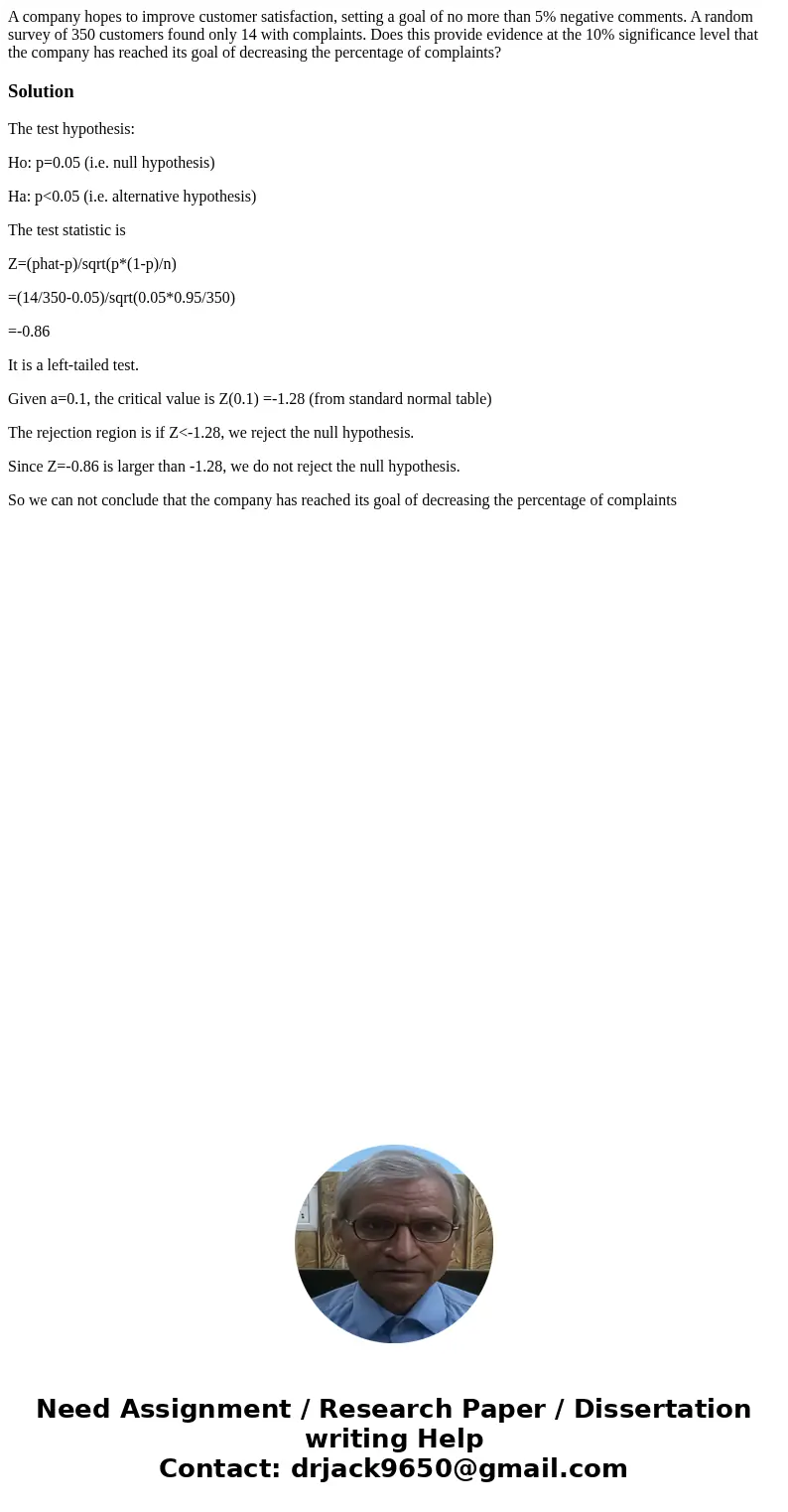A company hopes to improve customer satisfaction setting a g
A company hopes to improve customer satisfaction, setting a goal of no more than 5% negative comments. A random survey of 350 customers found only 14 with complaints. Does this provide evidence at the 10% significance level that the company has reached its goal of decreasing the percentage of complaints?
Solution
The test hypothesis:
Ho: p=0.05 (i.e. null hypothesis)
Ha: p<0.05 (i.e. alternative hypothesis)
The test statistic is
Z=(phat-p)/sqrt(p*(1-p)/n)
=(14/350-0.05)/sqrt(0.05*0.95/350)
=-0.86
It is a left-tailed test.
Given a=0.1, the critical value is Z(0.1) =-1.28 (from standard normal table)
The rejection region is if Z<-1.28, we reject the null hypothesis.
Since Z=-0.86 is larger than -1.28, we do not reject the null hypothesis.
So we can not conclude that the company has reached its goal of decreasing the percentage of complaints

 Homework Sourse
Homework Sourse